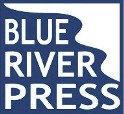Blog
4 Quick Tips to Practice Meditation
The article below is an excerpt from Beth Shaw’s book, Healing Trauma with Yoga: Go from Surviving to Thriving with Mind-body Techniques.  The following 4 quick tips to practice meditation are steps that will help you establish a meditation practice:
The following 4 quick tips to practice meditation are steps that will help you establish a meditation practice:
Just Do It
- Just do it. Commit to practicing your meditation for ten minutes (or more) each day. If that seems too overwhelming to you at the beginning, start with five minutes and tack on one minute every day. Set a timer and try to practice at the same time every day, which could be following your daily yoga practice. Find a comfortable place in your home (even if that means in the corner of your bedroom) and make that space a place of calm and love.
Style
- Choose a style for that day, don’t be afraid to mix it up
Visualize
3. Visualize an object or place in which you find peace, such as a quiet beach or your favorite flower.
Journal
- Journal at the end of your practice so that you can keep track of your progress. For example, write down any techniques you tried and what you experienced practicing them. What were your thoughts and feelings before, during, and after meditating? Also, note if your practice revealed any solutions to questions or situations you’ve struggled to resolve. Finally, keep track of the benefits that you notice from incorporating
 Beth Shaw is the president and founder of YogaFit Training Systems. The leader in mind-body education, YogaFit has trained more than 200,000 fitness instructors on six continents. Shaw and her company have been showcased in numerous fitness magazines as well as Oprah’s O magazine, Time, More, Entrepreneur, Yoga Journal, Glamour, Self and USA Today. She has also been featured on CNBC, CNN, NBC, CBS, E Style Channel, Showtime, and Donny Deutsch’s Big Idea.
Beth Shaw is the president and founder of YogaFit Training Systems. The leader in mind-body education, YogaFit has trained more than 200,000 fitness instructors on six continents. Shaw and her company have been showcased in numerous fitness magazines as well as Oprah’s O magazine, Time, More, Entrepreneur, Yoga Journal, Glamour, Self and USA Today. She has also been featured on CNBC, CNN, NBC, CBS, E Style Channel, Showtime, and Donny Deutsch’s Big Idea.
For more information on meditation, pick up a copy of Beth’s book, Healing Trauma with Yoga: Go from Surviving to Thriving with Mind-body Techniques. You can order a book here or wherever books are sold.
Healing Trauma with Yoga Top 50 New Health & Fitness Books
Blue River Press proudly announces Beth Shaw’s book, Healing Trauma with Yoga: Go from Surviving to Thriving with Mind-body Techniques hit the top 50 listing of books in the Health and Fitness category the first week of December 2019.
The anticipated fourth book of Beth Shaw, Healing Trauma with Yoga was released December 1, 2019. As a practical guide to understanding healing and the root cause and effects of trauma, it is easy-to-understand and assists the reader in addressing and working through anxiety, depression, PTSD, and other problems that are associated with trauma. This book will help you learn how to heal yourself and others. You can easily implement the essential information and scientifically-proven techniques for self-care.
“We’re very pleased that all the hard work and preparation to launch Beth Shaw’s book has paid off. We are looking forward to a strong first quarter for Healing Trauma with Yoga.” Sales and Marketing Manager at Blue River Press, Thomas McLean, stated.
Healing Trauma with Yoga is designed for anyone who has experienced trauma, has clients or students who suffered from distress, or is supporting a loved-one with trauma-related issues.
 Beth Shaw founded and is the president of YogaFit Training Systems. YogaFit is the leader in mind-body education and has trained over 200,000 fitness instructors on six continents. Beth and her company have been featured in numerous magazines and television shows.
Beth Shaw founded and is the president of YogaFit Training Systems. YogaFit is the leader in mind-body education and has trained over 200,000 fitness instructors on six continents. Beth and her company have been featured in numerous magazines and television shows.
To get started, keep up with, or learn more about health and fitness, you can follow Beth on social media:
Twitter Beth Shaw – Twitter YogaFit – Facebook – Instagram
If you are interested in scheduling a book signing or appearance with Beth, please contact Thomas McLean tmclean@cardinalpub.com
To see more of our array of book titles and genres, you can go to our book shop and look around. You just might see something you would like to purchase. If you have any questions, you can contact us at 317-352-8200.
